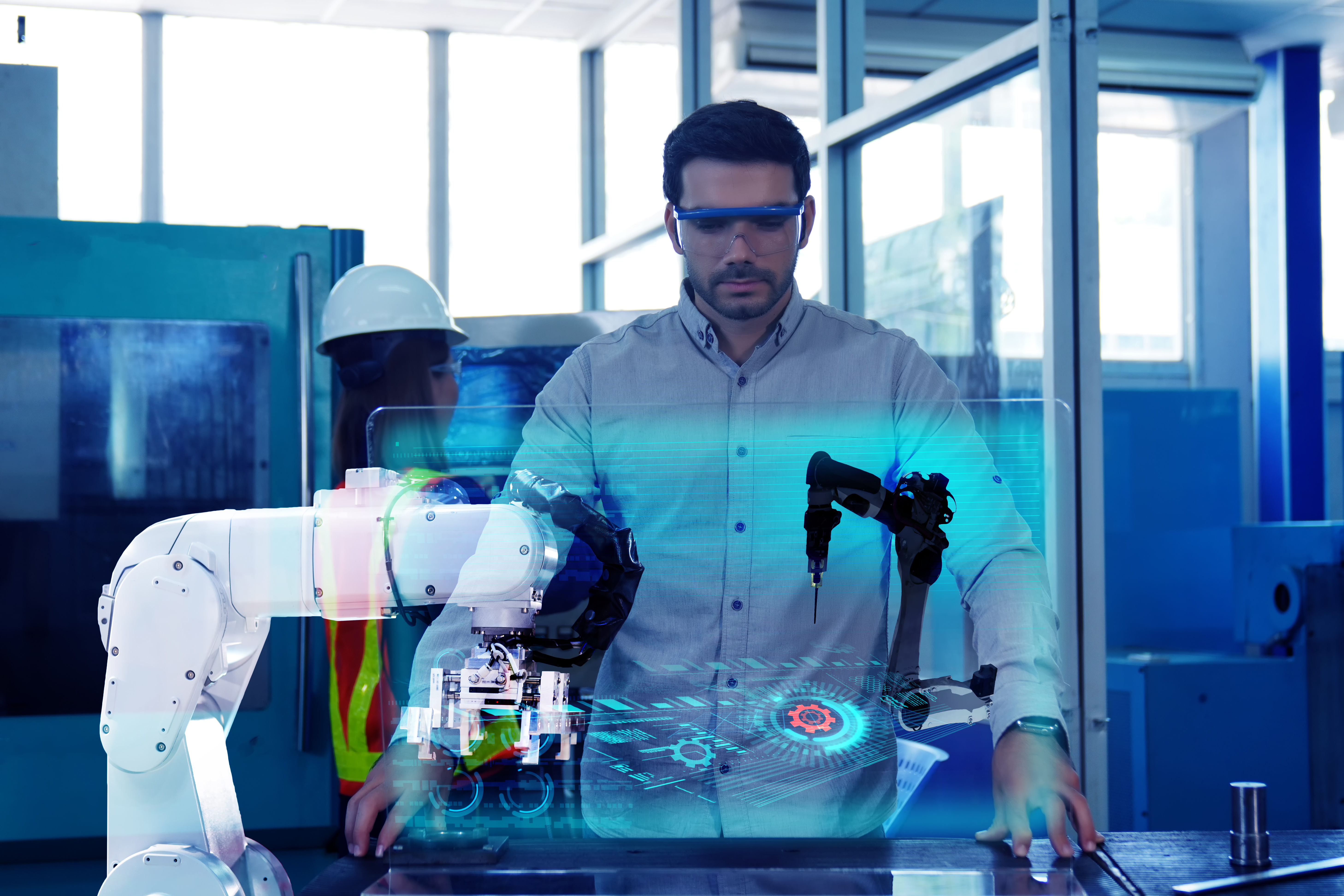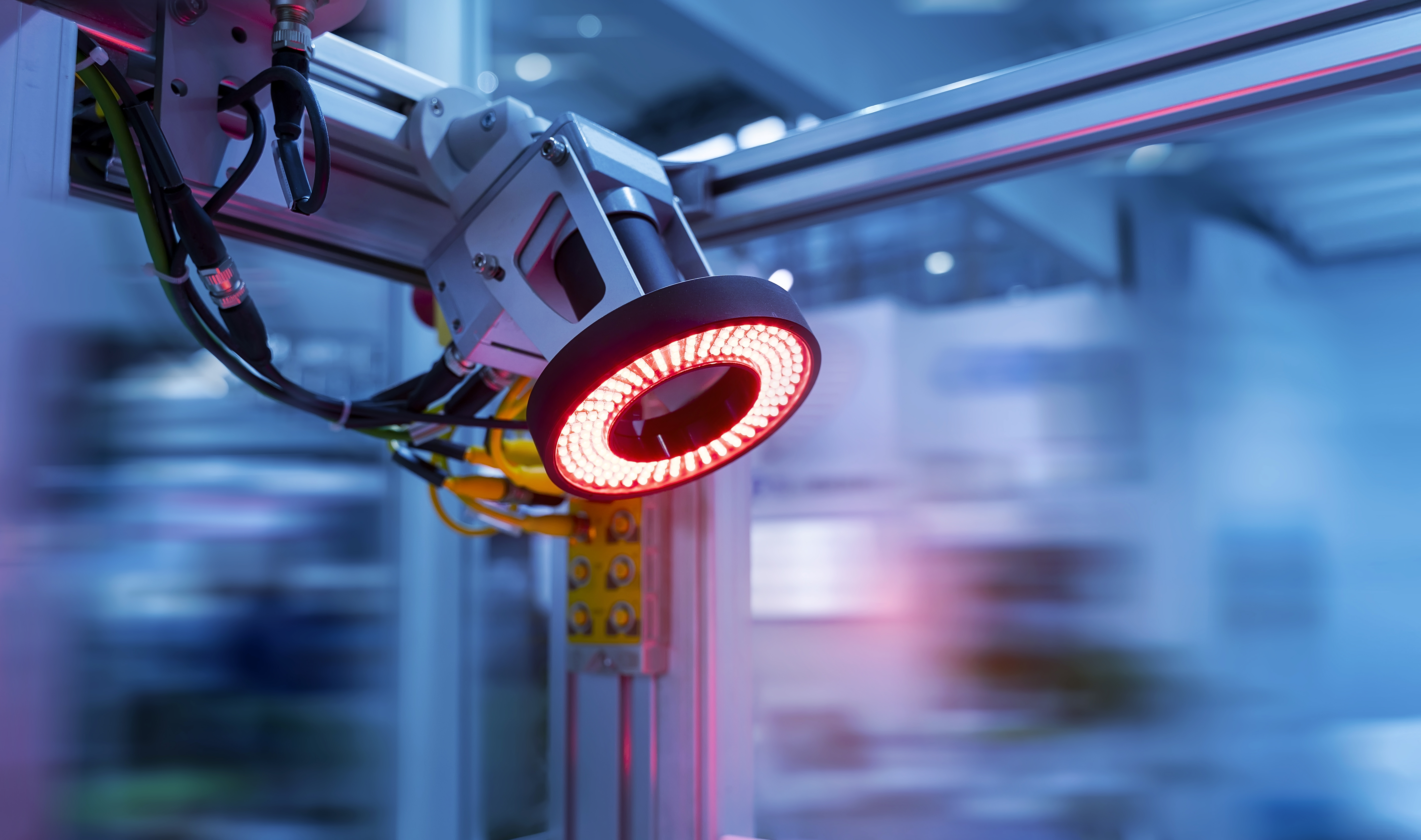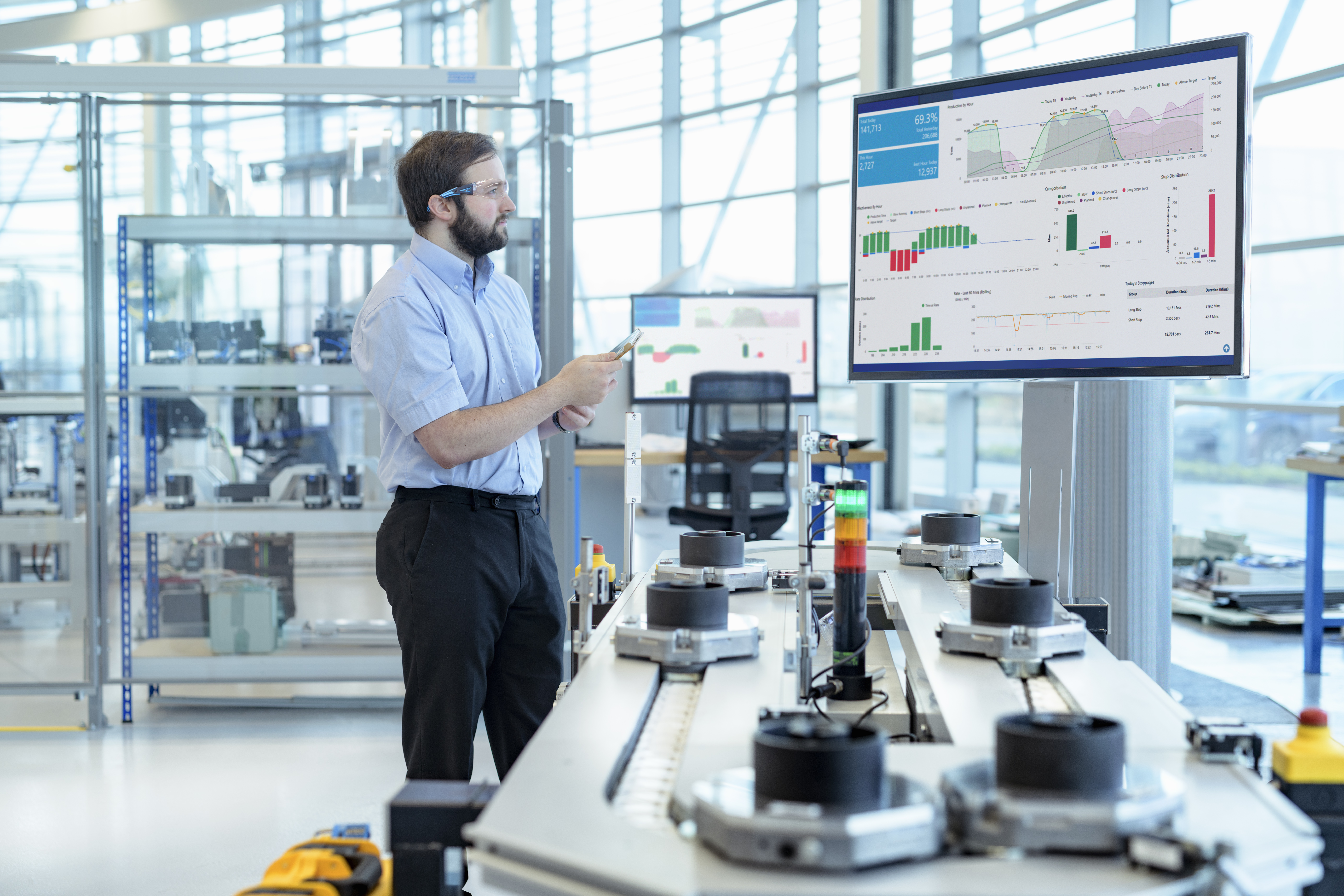Organisational inertia
Most firms still optimise for hardware-centric lifecycles. Industrial DevOps — fast, integrated iterations where hardware prototypes evolve alongside software — is the exception, not the norm.
Industrial sector
For decades, industrial champions built their reputations on hardware quality and performance. Cars were prized for their reliability, home appliances for their durability, and robots for their precision. Today, the market has changed. The rules have been rewritten. How can companies safeguard their future?

Value now lies in cyber physical systems (CPS), where hardware, software, data, and services are tightly interwoven.
Companies with decades of hardware-driven success now find themselves constrained by their own legacy strengths. Processes, structures, and business models were built around their mechanical excellence.
Hardware was the thing to sell. Software was merely an afterthought, an enabling feature — a control, an interface, or a digital button.
“A manufacturer of physical products will always be a hardware provider. The aim is not to alter that identity but to grasp the value creation method, recognising that we live in a world where system outcomes, not hardware capabilities, create value.” “A manufacturer of physical products will always be a hardware provider. The aim is not to alter that identity but to grasp the value creation method, recognising that we live in a world where system outcomes, not hardware capabilities, create value.”
To stay competitive, organisations must embrace new dynamics:
The winners are no longer those who build the strongest machines, but those who design the most effective systems.

Many organisations still mistake digitalisation for simply adding digital features to existing products. This misunderstanding often leads to costly pitfalls. Large amounts of time and budget are spent on “digitalised hardware” initiatives, yet the results frequently amount to little more than transferring physical buttons to a screen.
While the interface changes, the core functionality stays the same.
What does that look like in practice? A remote dashboard added to a robotic arm. An app that mirrors the washing machine’s control panel. A GPS-enabled tractor with online manuals. These are all useful upgrades, but fall short of true digitalisation, the kind that delivers integrated, end-to-end value across an entire ecosystem.
The difference between these approaches is profound. Hardware-first development locks companies into a cycle of incremental innovation — convenient, yes, but rarely transformative. Customers get more features, not more value. And because the product remains defined by its hardware limits, breakthrough innovation stays out of reach. A classic example illustrates this perfectly.
BlackBerry was a triumph of hardware engineering, cramming features such as email and camera functions, all within the strict limits of its physical design. Yet innovation could only stretch as far as the buttons and screen allowed.
Apple took a fundamentally different path. Instead of asking how many features could fit on a keyboarded phone, it reimagined the product as a system — one built around user experience and value, rather than hardware constraints. The hardware evolved to serve the software, not the other way round. This shift redefined an entire industry.
The same story plays out across industries, from consumer to industrial products. A ‘digitally upgraded’ robotic arm might improve monitoring, but it has a minimal impact on the system's operations. By contrast, a true cyber physical robotic system integrates adaptive programming, AI-driven predictive maintenance, cloud-based fleet coordination, and seamless human-machine collaboration.
It requires a shift in hardware design to unlock those system-level outcomes, transforming a single machine into a connected, dynamic ecosystem.
Despite significant investment, most industrial digitalisation initiatives fail to deliver any meaningful results. Studies show that only around 30 % of large-scale transformations hit their goals.
Even among the apparent successes, many remain stuck in the so-called 'digitally upgraded' mode, merely adding dashboards, apps, or sensors without rethinking the bigger picture. As a result, the product, customer outcomes, and even the underlying business model often remain unchanged.
So, why do so many digitalisation efforts struggle to go the distance?
Most firms still optimise for hardware-centric lifecycles. Industrial DevOps — fast, integrated iterations where hardware prototypes evolve alongside software — is the exception, not the norm.
Product definition remains locked in mechanical terms. Too often, organisations lack system-level product management, treating digital and service layers as extras rather than integral parts of the value proposition.
Engineering pride often lies in mechanical excellence. Embracing software, data, and cross-functional collaboration challenges ingrained identities and siloed ways of working. Without that shift, innovation stalls.

These barriers critically undermine development from the start.
When ideation and concept design start with a hardware-first mindset, digital integration inevitably falls behind, limiting software capabilities, misaligning features with customer needs and forcing costly retrofits.
Without a fundamental shift in thinking, a truly sustainable business model will never take shape.
Systems thinking means designing with the entire solution in mind, not just optimising its individual parts. It aligns hardware, software, and services into one coherent architecture that is modular, scalable, and resilient.
The goal isn’t to make existing products more digital, but to use digital capabilities to redefine what the product is and what it can become
A system is a living entity, and it doesn’t end with delivering a device — it begins there. Once deployed, it becomes part of an evolving ecosystem with limitless opportunities to learn, adapt, and improve. This ongoing evolution transforms not only products, but also the business models that support them.
Sustainable growth is now tightly linked to digital services and platform-based models, where success is measured not by technical specifications but by performance and business impact. This marks a decisive shift: from building smarter products to creating interconnected systems that deliver measurable impact.
Such transformation demands a new mindset. Rather than asking ‘What features can we add to the washing machine?’, ask ‘What outcomes do households need from their laundry system?’. That shift in thinking is why digital-native players thrive. They think holistically, defining outcomes first, then shaping hardware, software, data, and connectivity to bring that vision to life.
The benefits of cyber physical systems are immediate, but envisioning a true system outcome is often challenging. Here are a few cross-industry examples of how real-world products are evolving from standalone hardware to fully integrated systems.
Before: Strong suction power and fine dust filtration.
After: The home is cleaned autonomously: cleanliness becomes a background service, not a chore, while the user cooks, works or is away.
Before: Horsepower, torque, and fuel consumption.
After: Continuous mobility service: the car updates itself over-the-air, integrates with smart-city traffic systems, and offers personalised infotainment and driving assistance.
Before: Fast and smooth ride, reliable uptime.
After: Optimised building flow: elevators predict traffic patterns, group passengers intelligently, and integrate with energy management systems to cut costs.
Before: High resolution and image clarity.
After: An end-to-end diagnostic journey: AI-assisted image analysis, automatic patient history comparison, and seamless results transfer to electronic health records.
Before: Durability and maximum flow rate.
After: Guaranteed uptime and lowest cost-per-litre: the system monitors itself, predicts failures, and optimises energy use across the entire production line.
Hardware-driven success still matters, but it is no longer enough. The true differentiator lies in what the system delivers: outcomes that are intelligent, efficient, and sustainable. That’s both the challenge and the promise of the cyber physical future.
For legacy companies, the mandate is clear: to stay relevant, deliver customer value, and secure healthy returns, they must learn to think in systems.
This shift does more than modernise operations, it unlocks new growth opportunities. Suddenly, revenue expands beyond one-off sales into recurring subscription and platform-based models. Emerging technologies like AI and machine learning move from buzzwords to built-in sources of advantage. Teams evolve from rigid, siloed structures to collaborative, outcome-driven development that fuels genuine innovation.
And the result? Innovative, fully integrated products that are smarter, more connected, and reach customers faster with fewer setbacks along the way.
Thinking in systems is no longer optional. It is the only path to future competitiveness.